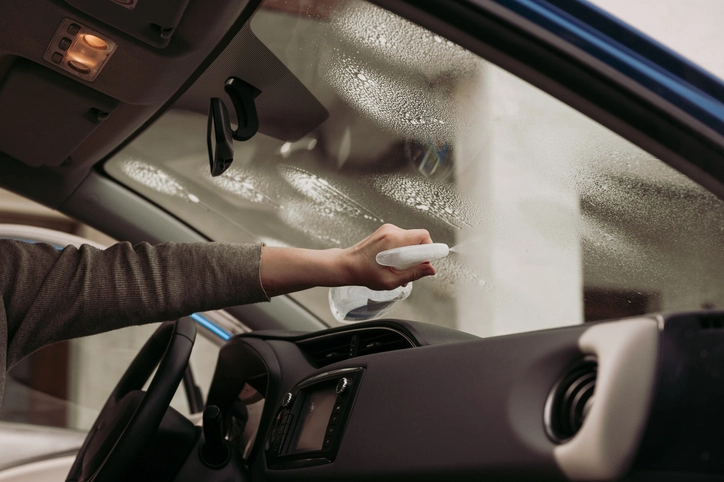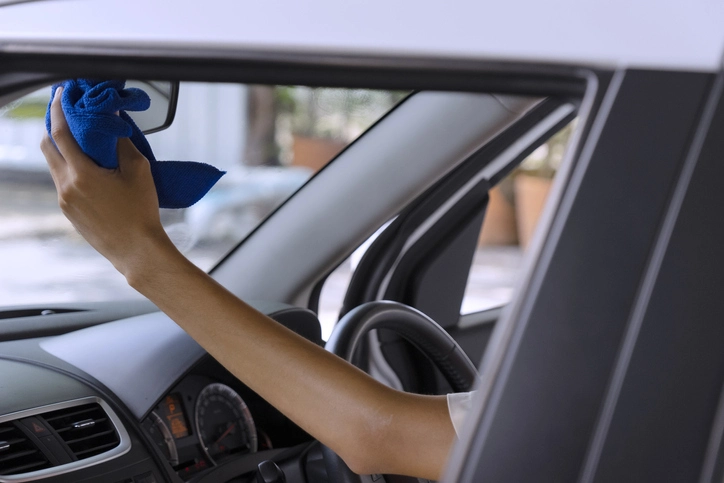The Ultimate Hack to Clean Inside Windshields
Cleaning the inside of a windshield can be a daunting task, often presenting several challenges. One primary issue is reaching those awkward angles and corners where dirt and grime tend to accumulate. Additionally, the presence of greasy residues from air pollutants and interior treatments can make the task even more frustrating. Moreover, factors such as condensation and the natural oils from human skin contribute to a persistent film that diminishes visibility. Addressing these challenges requires innovative solutions and efficient techniques to ensure a clear and safe driving experience.
Understanding Windshield Scratches
Causes of Windshield Scratches:
Road Debris: Small stones, gravel, and other debris kicked up by vehicles on the road can hit the windshield, causing scratches.
Wiper Blades: Old or damaged wiper blades can leave streaks or scratches on the windshield, especially if debris gets trapped between the blade and the glass.
Improper Cleaning: Using rough or abrasive materials to clean the windshield, such as dirty rags or harsh cleaning chemicals, can lead to scratches.
Weather Conditions: Extreme weather conditions like hailstorms or sandstorms can cause scratches on the windshield surface.
Accidental Damage: Accidental impacts, such as bumping into the windshield with objects or improper handling during repairs or installations, can result in scratches.
Impact of Scratches on Visibility:
Glare and Distortion: Scratches on the windshield can create glare from sunlight or oncoming headlights, affecting visibility, especially during dawn, dusk, or night driving.
Reduced Clarity: Even minor scratches can scatter light and distort the view, making it harder to see objects clearly through the windshield.
Risk of Cracking: Scratches weaken the structural integrity of the windshield, increasing the risk of cracks or shattering upon impact, which further compromises visibility and safety.
Impaired Wiper Function: Deep scratches can interfere with the movement of wiper blades, leaving streaks and reducing their effectiveness in clearing rain, snow, or debris from the windshield.
Legal Concerns: In many jurisdictions, significant windshield damage, including extensive scratches that obstruct the driver’s view, can lead to fines or citations for vehicle safety violations.
Hack To Clean Inside Windshield

Here’s a hack to clean the inside of your windshield effectively:
Materials needed:
- White vinegar
- Water
- Microfiber cloth or paper towels
- Spray bottle
Instructions:
- In a spray bottle, combine equal parts white vinegar and water. One cup of vinegar and one cup of water, for instance, can be combined.
- Spray the vinegar and water solution onto the inside of your windshield, covering the entire surface.
- Let the solution sit for a minute or two to loosen up any dirt, grime, or film on the glass.
- Take a microfiber cloth or paper towel and wipe the windshield in a circular motion, starting from the top and working your way down.
- Continue wiping until all the dirt and streaks are removed, ensuring you reach all areas of the windshield.
- If necessary, repeat the process until the windshield is clean and streak-free.
- For stubborn stains or spots, you can make a baking soda paste by mixing baking soda with a small amount of water. After rubbing the paste onto the stain for a few minutes and letting it stay, gently clean the area with a sponge or cloth and then rinse with water.
Step-by-Step Guide | How to Clean Inside Windshield

Preparation
Gather necessary materials: You will need a microfiber cloth, glass cleaner, and optionally, a small step stool or ladder if your windshield is hard to reach.
- Park your vehicle in a shaded area to prevent the cleaner from drying too quickly.
- Open all doors to allow for better airflow and ventilation inside the car.
Application of Cleaning Solution
- Spray the glass cleaner onto one side of the microfiber cloth.
- Starting from the top corner of the windshield, apply the cleaning solution evenly across the glass surface.
- Pay special attention to areas with stubborn stains, such as those caused by tobacco smoke or adhesive residue. You may need to apply additional cleaner and gently scrub these areas with the cloth.
Wiping Technique
- Using the dry side of the microfiber cloth, begin wiping the windshield in a horizontal motion from one side to the other.
- As you wipe, overlap your strokes slightly to prevent streaking.
- For hard-to-reach areas near the dashboard or around the rearview mirror, fold the cloth to create a smaller, more manageable surface.
Drying and Polishing
- Once you have wiped the entire windshield, inspect it for any remaining streaks or spots.
- If necessary, use a clean, dry microfiber cloth to buff out any streaks or smudges.
- Finally, allow the windshield to air dry completely before closing the doors and returning to normal driving conditions. If you want professional guidance then Reliable Auto Glass is best in business.
Tips to Prevent Windshield Scratches
Proper Maintenance of Cleaning Tools:
- Use soft microfiber cloths or specifically designed windshield cleaning tools to avoid scratching the glass.
- Regularly clean your cleaning tools to remove any dirt or debris that could scratch the windshield.
- Avoid using abrasive materials such as harsh sponges or paper towels when cleaning the windshield.
- Use a gentle, non-abrasive glass cleaner to prevent scratching the surface.
Parking Strategies to Avoid Damage:
- Park your vehicle away from areas with high wind activity, such as open fields or exposed parking lots, where debris is more likely to be blown onto your windshield.
- Whenever possible, park in a garage or covered parking area to shield your vehicle from windblown debris.
- Avoid parking under trees or near construction sites where falling branches or debris could scratch your windshield.
- When parallel parking, be mindful of curbs and other vehicles to prevent accidentally scraping your windshield against them.
- If parking in a crowded area, consider using a windshield cover or sunshade to provide an additional layer of protection against scratches and debris.
Conclusion
Cleaning the inside of your windshield can be a challenging task, but with the right hacks and techniques, you can achieve a sparkling result. One effective hack involves using a mixture of vinegar and water. Simply combine equal parts white vinegar and water in a spray bottle, then spritz the solution onto the windshield. Use a microfiber cloth to wipe the glass in a circular motion, ensuring you cover the entire surface. The acidity of the vinegar helps to break down stubborn grime and residue, leaving your windshield clear and streak-free. Feel free to contact us for any type of services or query like hack to clean inside windshield.
FAQs
What Is The Best Hack To Clean The Inside Of A Windshield?
One effective hack is to use a mixture of equal parts white vinegar and water sprayed onto the windshield, followed by wiping with a microfiber cloth.
Why Is Vinegar Used In Cleaning The Inside Of Windshields?
Vinegar’s acidity helps break down grime and residue, making it easier to remove stubborn stains and achieve a streak-free finish.
Can I Use Any Type Of Vinegar For Cleaning My Windshield?
White vinegar is preferred for cleaning windshields as it is less likely to leave behind streaks or residue compared to other types of vinegar.
How Should I Apply The Vinegar And Water Mixture To Clean My Windshield?
Pour the vinegar and water mixture into a spray bottle, then spritz it onto the windshield. Use a microfiber cloth to wipe the glass in circular motions, ensuring thorough coverage.
Is There An Alternative To Using A Microfiber Cloth For Cleaning The Windshield?
Yes, you can also use crumpled newspaper to buff the glass after applying the vinegar and water mixture. The newspaper provides extra abrasion to tackle tough spots and absorbs moisture for a pristine finish.
Will Using Vinegar Damage My Windshield?
No, vinegar is safe to use on windshields. However, avoid using abrasive materials or harsh chemicals that could potentially scratch or damage the glass.

